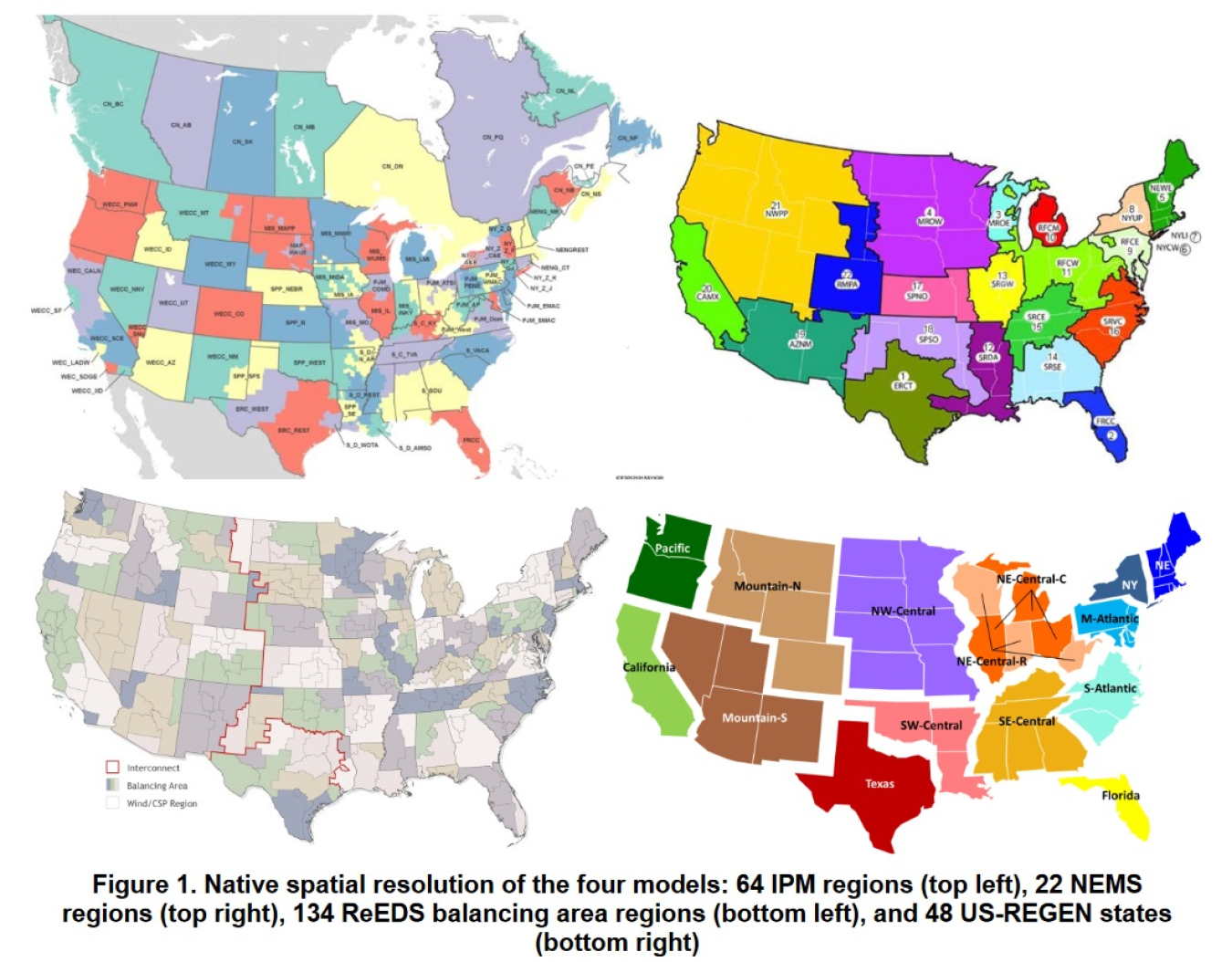This report discusses the various methods for treating variable renewable energy (primarily wind and solar photovoltaics) among four modeling teams.
December 14, 2017
IPM=Integrated Planning Model (EPA), NEMS=National Energy Modeling System (EIA), ReEDS=Regional Energy Deployment System (NREL), US-REGEN=United States Regional Economy, Greenhouse Gas, and Energy (EPRI)
Long-term capacity expansion models of the U.S. electricity sector have long been used to inform electric sector stakeholders and decision makers. With the recent surge in variable renewable energy (VRE) generators—primarily wind and solar photovoltaics—the need to appropriately represent VRE generators in these long-term models has increased. VRE generators are especially difficult to represent for a variety of reasons, including their variability, uncertainty, and spatial diversity.
This report summarizes the analyses and model experiments that were conducted as part of two workshops on modeling VRE for national-scale capacity expansion models. It discusses the various methods for treating VRE among four modeling teams from the Electric Power Research Institute (EPRI), the U.S. Energy Information Administration (EIA), the U.S. Environmental Protection Agency (EPA), and the National Renewable Energy Laboratory (NREL). The report reviews the findings and learnings from the two workshops and emphasizes the areas where there is still need for additional research and development on analysis tools to incorporate VRE into long-term planning and decision-making. This research is intended to inform the energy modeling community on the modeling of variable renewable resources, and is not intended to advocate for or against any particular energy technologies, resources, or policies.

